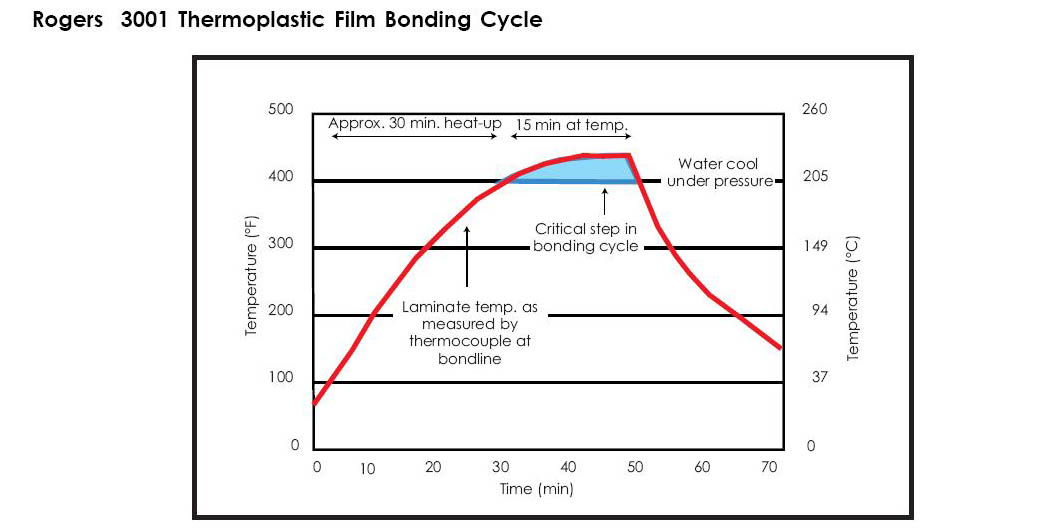The rapid development of modern communication technology has ushered in an unprecedented large market for the manufacture of microwave high-frequency PCBs. As the basic material for the manufacture of microwave high-frequency PCBs multilayer boards, its material composition and related performance indicators determine the realization and processability of the final product performance indicators of its design. In view of the increasing design and application of microwave-based PTFE dielectric substrates, especially in recent years, the increasing demand for the design of PTFE dielectric multilayer boards has brought unprecedented opportunities and challenges to the majority of printed board manufacturers. .
Multi-layer manufacturing technology of PTFE microwave high-frequency PCBs. After focusing on solving the characteristic impedance control technology in the manufacturing technology of microwave high-frequency PCB multilayer board, which bonding system should be selected to realize the multilayer of microwave high-frequency PCB PCB manufacturing has become a problem that every designer and craftsman must face.
Generally speaking, the choice of bonding method is different for the manufacturing of microwave stripline structure used in the PTFE dielectric laminate substrate material and other microwave high-frequency PCBs manufacturing. It needs to be multi-layered according to the design requirements and related companies. Microwave high frequency PCB processing capability, product quality and reliability indicators are determined.
The design and processing history of microwave high frequency PCB multilayers, the first product of ROGERS-the thermoplastic adhesive film 3001, realizes the multilayer manufacturing of RT/duroid 6002PTFE ceramics.
The RT/duroid 6002PTFE ceramic produced by ROGERS is a ceramic powder-filled polytetrafluoroethylene (PTFE) dielectric substrate material. It has excellent high-frequency and low-loss characteristics, strict dielectric constant and thickness control, and excellent electrical And mechanical properties, extremely low dielectric constant thermal coefficient, in-plane expansion coefficient matching with copper, low Z-axis thermal expansion coefficient and other remarkable characteristics. At present, it is widely used in ground and airborne radar systems, phase array antennas, global positioning system antennas, high-reliability complex multilayer circuits, high-power backplanes, and commercial aviation collision avoidance systems.
With the growing market demand for the design and processing of multi-layer microwave high-frequency PCBs, ROGERS has developed a thermoplastic adhesive film material with low dielectric constant 3001. In order to select RT / duroid 6002 dielectric PCB materials, the corresponding multi-layer microwave high-frequency PCB can be manufactured. Provide a reliable guarantee.
The 3001 bonding sheet material is a thermoplastic chlorofluoro copolymer with low dielectric constant and low loss tangent in the microwave frequency range. In addition, the bonding sheet 3001 also has high temperature resistance and chemical inertness, so that the multilayer microwave high-frequency PCBs manufactured by the bonding sheet 3001 can meet or exceed the requirements to adapt to the most stringent manufacturing process and environmental requirements.
3001 Adhesive film multilayer realization process
For the multi-layer realization of 3001 adhesive film, the lamination parameter control is shown in Figure 1 below, and the pressing process control is as follows:
1) Arrangement of boards: alternately stack RT / duroid 6002 boards and 3001 bonding sheets. In order to ensure the accuracy of the overlap between the layers of the multilayer microwave high-frequency PCBs, four-slot positioning pins are used to arrange the boards. The method of placing the thermocouple probe into the non-patterned area of the inner layer of the plate to be pressed is adopted to control the lamination temperature and time.
2) Closing: When the press is in a cold state (usually the temperature of the press is lower than 120°C), place the above-mentioned arranged and moulded plate in the center of the press, close the press, and adjust the hydraulic system to make it stand by The pressure area can obtain the required pressure. Under normal circumstances, the initial pressure of 100 PSI is sufficient, and the subsequent full pressure will rise to 200 PSI to ensure proper fluidity of the adhesive sheet.

3) Heating: Start the heating cycle of the laminator to 220°C. In general, the maximum heating rate is controlled so that the temperature difference between the upper and lower furnace plates is within the range of 1~5 degree Celsius.
4) Insulation: Normally, it takes about 15 minutes to keep the adhesive sheet in a molten state at 220°C, and enough time to flow and wet the surface of the medium to be adhered (for thicker plate structure, insulation Sometimes the time needs to be extended to 30~45 minutes).
5) Cold pressing: Turn off the heating system and cool down the laminated furnace plate while maintaining pressure until the temperature of the furnace plate drops to 120°C. Release the pressure and take out the template containing the laminate from the laminator.
In addition, in view of the structural characteristics of the RT/duroid 6002 dielectric substrate, it has been proved in practice that the 6700 thermoplastic adhesive sheet from the Arlon division of Rogers can also be used to achieve multilayer bonding.
Since the 3001 adhesive film is a thermoplastic prepreg, it is easy to cause the through hole to shift during the multiple pressing process. It is recommended to set the displacement compensation according to the thermoplastic characteristics of the 3001 adhesive film during the multiple pressing process to ensure the position of the through hole.